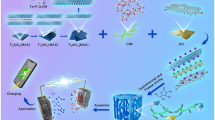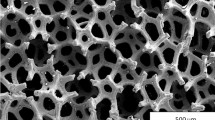Abstract
Graphene has a great potential to substitute other amorphous carbon materials and has been widely used in many water and wastewater treatments such as purification or photocatalytic processes. Graphene powder with different degrees of oxidation was synthesised and subsequently used to prepare supported membranes. Ceramic porous materials were chosen as membrane support due to the robustness and long life required in a likely application. Ultrathin membranes (7–9 µm) were successfully prepared through vacuum filtration of highly oxidised graphene or reduced graphene oxide solutions (1 mg ml−1). The influence of depositing different amounts of membrane precursor was extensively studied (0.003–0.037 mg cm−2); above 0.037 mg cm−2, drying-related shrinkage problems are detected. Moreover, the ceramic support pore size (SPS) (0.008–0.08 µm) shows little impact in terms of the overall membrane flux resistance, and the deposited graphene layer usually governs the membrane permeation. Finally, long-term filtration experiments were also performed for weeks without substantial variation of the membrane structure or permeation (≤2 %), which is demanded in most conventional water treatments. Overall, the addition of partially oxidised graphene to conventional ceramic membranes greatly decreases their electrical resistivity (~2.8 × 10−5 Ω m), opening up the possibility of being employed for many environmental purposes.












Similar content being viewed by others
References
Novoselov KS, Geim AK, Morozov SV et al (2004) Electric field effect in atomically thin carbon films. Science 306:666–669. doi:10.1126/science.1102896
Lee C, Wei X, Kysar JW, Hone J (2008) Measurement of the elastic properties and intrinsic strength of monolayer graphene. Science 321:385–388. doi:10.1126/science.1157996
Ning J, Wang D, Zhang C et al (2015) Electrical and optical properties of layer-stacked graphene transparent electrodes using self-supporting transfer method. Synth Met 203:215–220. doi:10.1016/j.synthmet.2015.02.007
Kang S-H, Fang T-H, Hong Z-H, Chuang C-H (2013) Mechanical properties of free-standing graphene oxide. Diam Relat Mater 38:73–78. doi:10.1016/j.diamond.2013.06.016
Jagiello J, Judek J, Zdrojek M et al (2014) Production of graphene composite by direct graphite exfoliation with chitosan. Mater Chem Phys 148:507–511. doi:10.1016/j.matchemphys.2014.09.043
Liu F, Seo TS (2010) Large scale synthetic method for free standing graphene film and graphene sponges. In: 10th IEEE Int. Conference Nanotechnol. IEEE, pp 696–699
Campos-Delgado J, Botello-Méndez AR, Algara-Siller G et al (2013) CVD synthesis of mono- and few-layer graphene using alcohols at low hydrogen concentration and atmospheric pressure. Chem Phys Lett 584:142–146. doi:10.1016/j.cplett.2013.08.031
Radchenko TM, Shylau AA, Zozoulenko IV (2014) Conductivity of epitaxial and CVD graphene with correlated line defects. Solid State Commun 195:88–94. doi:10.1016/j.ssc.2014.07.012
Wu B, Tuncer HM, Katsounaros A et al (2014) Microwave absorption and radiation from large-area multilayer CVD graphene. Carbon 77:814–822. doi:10.1016/j.carbon.2014.05.086
Grennberg H, Jansson U (2012) Advanced functional materials. Sci Technol Mol Condens Matter Biol Syst. doi:10.1016/B978-0-44-453681-5.00005-4
Whitener KE, Sheehan PE (2014) Graphene synthesis. Diam Relat Mater 46:25–34. doi:10.1016/j.diamond.2014.04.006
Potts JR, Dreyer DR, Bielawski CW, Ruoff RS (2011) Graphene-based polymer nanocomposites. Polymer (Guildf) 52:5–25. doi:10.1016/j.polymer.2010.11.042
Zhao C, Xing L, Xiang J et al (2014) Formation of uniform reduced graphene oxide films on modified PET substrates using drop-casting method. Particuology 17:66–73. doi:10.1016/j.partic.2014.02.005
William S, Hummers J, Offeman RE (1958) Preparation of graphitic oxide. J Am Chem Soc 80:1339. doi:10.1021/ja01539a017
Nekahi A, Marashi PH, Haghshenas D (2014) Transparent conductive thin film of ultra large reduced graphene oxide monolayers. Appl Surf Sci 295:59–65. doi:10.1016/j.apsusc.2014.01.004
Xu Y, Bai H, Lu G et al (2008) Flexible graphene films via the filtration of water-soluble noncovalent functionalized graphene sheets. J Am Chem Soc 130:5856–5857. doi:10.1021/ja800745y
Chen C-M, Huang J-Q, Zhang Q et al (2012) Annealing a graphene oxide film to produce a free standing high conductive graphene film. Carbon 50:659–667. doi:10.1016/j.carbon.2011.09.022
Noerochim L, Wang JZ, Wexler D et al (2013) Rapid synthesis of free-standing MoO3/Graphene films by the microwave hydrothermal method as cathode for bendable lithium batteries. J Power Sources 228:198–205. doi:10.1016/j.jpowsour.2012.11.113
Wei Z, Barlow DE, Sheehan PE (2008) The assembly of single-layer graphene oxide and graphene using molecular templates. Nano Lett 8:3141–3145. doi:10.1021/nl801301a
Dolbin AV, Khlistyuck MV, Esel’son VB et al (2015) The effect of the thermal reduction temperature on the structure and sorption capacity of reduced graphene oxide materials. Appl Surf Sci. doi:10.1016/j.apsusc.2015.11.167
Du X, Zhou C, Liu H-Y et al (2013) Facile chemical synthesis of nitrogen-doped graphene sheets and their electrochemical capacitance. J Power Sources 241:460–466. doi:10.1016/j.jpowsour.2013.04.138
Bikkarolla SK, Papakonstantinou P (2015) CuCo2O4 nanoparticles on nitrogenated graphene as highly efficient oxygen evolution catalyst. J Power Sources 281:243–251. doi:10.1016/j.jpowsour.2015.01.192
Li H, Song Z, Zhang X et al (2013) Ultrathin, molecular-sieving graphene oxide membranes for selective hydrogen separation. Science 342(80):95–98. doi:10.1126/science.1236686
Liu R, Arabale G, Kim J et al (2014) Graphene oxide membrane for liquid phase organic molecular separation. Carbon 77:933–938. doi:10.1016/j.carbon.2014.06.007
Li H, Song Z, Zhang X et al (2013) Ultrathin, molecular-sieving graphene oxide membranes for selective hydrogen separation. Science 342:95–98. doi:10.1126/science.1236686
Eda G, Chhowalla M (2010) Chemically derived graphene oxide: towards large-area thin-film electronics and optoelectronics. Adv Mater 22:2392–2415. doi:10.1002/adma.200903689
Paul DR (2012) Creating new types of carbon-based membranes. Sci 335:413–414. doi:10.1126/science.1216923
Geim AK, Novoselov KSS (2007) The rise of graphene. Nat Mater 6:183–191. doi:10.1038/nmat1849
Chen J, Guo Y, Huang L et al (2014) Controllable fabrication of ultrathin free-standing graphene films. Philos Trans R Soc A Math Phys Eng Sci 372:20130017. doi:10.1098/rsta.2013.0017
Zheng Q, Li Z, Yang J, Kim J (2014) Graphene oxide-based transparent conductive films. Prog Mater Sci 64:200–247. doi:10.1016/j.pmatsci.2014.03.004
Zheng Q, Shi L, Yang J (2012) Langmuir–Blodgett assembly of ultra-large graphene oxide films for transparent electrodes. Trans Nonferrous Met Soc China 22:2504–2511. doi:10.1016/S1003-6326(11)61492-1
Xu Y, Long G, Huang L et al (2010) Polymer photovoltaic devices with transparent graphene electrodes produced by spin-casting. Carbon 48:3308–3311. doi:10.1016/j.carbon.2010.05.017
Chowdhury S, Balasubramanian R (2014) Graphene/semiconductor nanocomposites (GSNs) for heterogeneous photocatalytic decolorization of wastewaters contaminated with synthetic dyes: a review. Appl Catal B 160–161:307–324. doi:10.1016/j.apcatb.2014.05.035
Berdova M, Perros AP, Kim W et al (2014) Exceptionally strong and robust millimeter-scale graphene-alumina composite membranes. Nanotechnology 25:355701. doi:10.1088/0957-4484/25/35/355701
Li N, Yang G, Sun Y et al (2015) Free-standing and transparent graphene membrane of polyhedron box-shaped basic building units directly grown using a NaCl template for flexible transparent and stretchable solid-state supercapacitors. Nano Lett 15:3195–3203. doi:10.1021/acs.nanolett.5b00364
Feng X, Chen W, Yan L (2015) Free-standing dried foam films of graphene oxide for humidity sensing. Sensors Actuators B Chem 215:316–322. doi:10.1016/j.snb.2015.03.068
Dikin DA, Stankovich S, Zimney EJ et al (2007) Preparation and characterization of graphene oxide paper. Nature 448:457–460. doi:10.1038/nature06016
Rana K, Singh J, Lee JT et al (2014) Highly conductive freestanding graphene films as anode current collectors for flexible lithium-ion batteries. ACS Appl Mater Interfaces 6:11158–11166. doi:10.1021/am500996c
Liu Y, Zhang D, Shang Y, Liu Y (2014) A simple route to prepare free-standing graphene thin film for high-performance flexible electrode materials. RSC Adv 4:30422. doi:10.1039/C4RA04031G
Hu X, Yu Y, Zhou J et al (2015) The improved oil/water separation performance of graphene oxide modified Al2O3 microfiltration membrane. J Memb Sci 476:200–204. doi:10.1016/j.memsci.2014.11.043
Aba NFD, Chong JY, Wang B et al (2015) Graphene oxide membranes on ceramic hollow fibers—Microstructural stability and nanofiltration performance. J Memb Sci 484:87–94. doi:10.1016/j.memsci.2015.03.001
Almandoz MC, Pagliero CL, Ochoa NA, Marchese J (2015) Composite ceramic membranes from natural aluminosilicates for microfiltration applications. Ceram Int 41:5621–5633. doi:10.1016/j.ceramint.2014.12.144
Hatori H, Takagi H, Yamada Y (2004) Gas separation properties of molecular sieving carbon membranes with nanopore channels. Carbon 42:1169–1173
Chen X, Dai Y, Wang X et al (2015) Synthesis and characterization of Ag3PO4 immobilized with graphene oxide (GO) for enhanced photocatalytic activity and stability over 2,4-dichlorophenol under visible light irradiation. J Hazard Mater 292:9–18. doi:10.1016/j.jhazmat.2015.01.032
Kim H-S, Takizawa S, Ohgaki S (2007) Application of microfiltration systems coupled with powdered activated carbon to river water treatment. Wastewater Reclam Reuse Sustain 202:271–277. doi:10.1016/j.desal.2005.12.064
Mezohegyi G, Bengoa C, Stuber F et al (2008) Novel bioreactor design for decolourisation of azo dye effluents. Chem Eng J 143:293–298
Fu X, Yang H, Lu G et al (2015) Improved performance of surface functionalized TiO2/activated carbon for adsorption–photocatalytic reduction of Cr(VI) in aqueous solution. Mater Sci Semicond Process 39:362–370. doi:10.1016/j.mssp.2015.05.034
Chen J, Zhang F, Zhao Y-L et al (2016) Facile synthesis of CdS/C core–shell nanospheres with ultrathin carbon layer for enhanced photocatalytic properties and stability. Appl Surf Sci 362:126–131. doi:10.1016/j.apsusc.2015.11.197
Fagan R, McCormack DE, Dionysiou DD, Pillai SC (2015) A review of solar and visible light active TiO2 photocatalysis for treating bacteria, cyanotoxins and contaminants of emerging concern. Mater Sci Semicond Process 42:2–14. doi:10.1016/j.mssp.2015.07.052
Mezohegyi G, Gonçalves F, Órfão JJM et al (2010) Tailored activated carbons as catalysts in biodecolourisation of textile azo dyes. Appl Catal B 94:179–185. doi:10.1016/j.apcatb.2009.11.007
Sun L, Yu H, Fugetsu B (2012) Graphene oxide adsorption enhanced by in situ reduction with sodium hydrosulfite to remove acridine orange from aqueous solution. J Hazard Mater 203–204:101–110. doi:10.1016/j.jhazmat.2011.11.097
Mezohegyi G, van der Zee FP, Font J et al (2012) Towards advanced aqueous dye removal processes: a short review on the versatile role of activated carbon. J Environ Manag 102:148–164
Shao Y, Zhang S, Engelhard MH et al (2010) Nitrogen-doped graphene and its electrochemical applications. J Mater Chem 20:7491. doi:10.1039/c0jm00782j
Bikkarolla SK, Yu F, Zhou W et al (2014) A three-dimensional Mn3O4 network supported on a nitrogenated graphene electrocatalyst for efficient oxygen reduction reaction in alkaline media. J Mater Chem A 2:14493–14501. doi:10.1039/C4TA02279C
Mobarakabad P, Moghadassi AR, Hosseini SM (2015) Fabrication and characterization of poly(phenylene ether-ether sulfone) based nanofiltration membranes modified by titanium dioxide nanoparticles for water desalination. Desalination 365:227–233. doi:10.1016/j.desal.2015.03.002
Centeno A, Rocha VG, Alonso B et al (2013) Graphene for tough and electroconductive alumina ceramics. J Eur Ceram Soc 33:3201–3210. doi:10.1016/j.jeurceramsoc.2013.07.007
Ganguly A, Sharma S, Papakonstantinou P, Hamilton J (2011) Probing the thermal deoxygenation of graphene oxide using high resolution in situ X-ray based spectroscopies. J Phys Chem C 115:17009–17019. doi:10.1021/jp203741y
Bikkarolla SK, Cumpson P, Joseph P, Papakonstantinou P (2014) Oxygen reduction reaction by electrochemically reduced graphene oxide. Faraday Discuss 173:415–428. doi:10.1039/c4fd00088a
Long D, Li W, Ling L et al (2010) Preparation of nitrogen-doped graphene sheets by a combined chemical and hydrothermal reduction of graphene oxide. Langmuir 26:16096–16102. doi:10.1021/la102425a
Seven O, Dindar B, Aydemir S et al (2004) Solar photocatalytic disinfection of a group of bacteria and fungi aqueous suspensions with TiO2, ZnO and Sahara desert dust. J Photochem Photobiol A Chem 165:103–107. doi:10.1016/j.jphotochem.2004.03.005
Pei S, Cheng HM (2012) The reduction of graphene oxide. Carbon 50:3210–3228. doi:10.1016/j.carbon.2011.11.010
Ishak A, Rusop M (2014) Electrical Properties Of Intrinsic Amorphous Carbon Films From Ethanol Precursor. Int J Technol Enhanc Emerg Eng Res 3:305–308
Oh YJ, Yoo JJ, Kim YI et al (2014) Oxygen functional groups and electrochemical capacitive behavior of incompletely reduced graphene oxides as a thin-film electrode of supercapacitor. Electrochim Acta 116:118–128. doi:10.1016/j.electacta.2013.11.040
Wang L, Zhao J, Bai S et al (2014) Significant catalytic effects induced by the electronic interactions between carboxyl and hydroxyl group modified carbon nanotube supports and vanadium species for NO reduction with NH3 at low temperature. Chem Eng J 254:399–409. doi:10.1016/j.cej.2014.05.096
Chen L, Feng H, Xie Z, Sun F (2014) “Disc-point” mass transfer Constructal optimizations with Darcy and Hagen–Poiseuille flows in porous media. Appl Math Model 38:1288–1299. doi:10.1016/j.apm.2013.08.015
Fan L, Harris JL, Roddick FA, Booker NA (2001) Influence of the characteristics of natural organic matter on the fouling of microfiltration membranes. Water Res 35:4455–4463. doi:10.1016/S0043-1354(01)00183-X
Acknowledgements
The Spanish Ministerio de Economía y Competitividad is gratefully thanked for providing the financial support through the Grants (CTM2011-23069 and CTM2015-67970) and funding the doctoral scholarship (BES-2012-059675). Some of the authors are recognised by the Comissionat per a Universitats i Recerca del DIUE de la Generalitat de Catalunya (2014 SGR 1065) and supported by the Universitat Rovira i Virgili (2014PFR-URV-B2-35). Support from the Department of Education and Learning (DEL) in Northern Ireland and the Ulster University in the form of two PhD studentships for JB and SKB is gratefully acknowledged.
Author information
Authors and Affiliations
Corresponding authors
Rights and permissions
About this article
Cite this article
Giménez-Pérez, A., Bikkarolla, S.K., Benson, J. et al. Synthesis of N-doped and non-doped partially oxidised graphene membranes supported over ceramic materials. J Mater Sci 51, 8346–8360 (2016). https://doi.org/10.1007/s10853-016-0075-5
Received:
Accepted:
Published:
Issue Date:
DOI: https://doi.org/10.1007/s10853-016-0075-5




